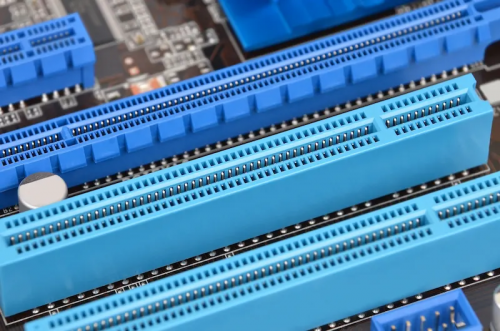Printed circuit boards (PCBs) have done more to advance the modern electronics industry than almost any other innovation. For decades, PCBs have been the ideal solution for electronics designers. They are compact, space-saving, and easy to manufacture. From the simplest household appliances to the most complex artificial intelligence, PCBs are the backbone of the industry.

1. Connect PCB using traditional method
PCBs have been around in one form or another for over a century, but it wasn’t until the advent of the microprocessor that PCBs became a practical solution for everyday devices. In the early days, the components that were attached to the PCB (microprocessors, passive components, memory devices) were still large compared to modern state-of-the-art components, so the PCBs themselves were also large. In most applications, multiple PCBs were required to provide space for all the required components, so an entire interconnect industry developed to provide solutions for connecting PCBs. From headers and sockets to card-edge backplane solutions, a variety of board-to-board connector designs have become very popular.
Yet, the electronics industry continues to evolve and improve. Modern microprocessors and other components are now a fraction of the size of their first generation ancestors. This has allowed designers to produce more compact devices, and PCBs have evolved in parallel to enable this. Modern devices of all kinds are taking advantage of this reduction in size and have seen electronics being used in a plethora of applications that would have been impossible just a decade ago.
However, this creates another problem when providing board-to-board connections. Although connectors have become more compact, they are now often one of the largest components that need to be fixed to the PCB. Traditional rigid board-to-board connection strategies using fixed pin and socket designs are simply not flexible enough to solve some of today’s design challenges.
2. Ribbon Cable

Over the past few years, ribbon cables have been a very popular alternative to fixed PCB mount connectors. They are flexible and easy to manufacture, allowing connections to PCBs even when space is limited. If you open up almost any desktop personal computer from the past 30 years, there is a good chance there is a ribbon cable somewhere inside. Ribbon cables still have their place, but modern industry demands more compact, higher performance solutions. As a result, ribbon cable technology has evolved.
FFC is widely considered by the industry to be a modern alternative to traditional ribbon cables. FFC stands for Flat Flexible Cable and is the latest evolution of the common ribbon cable. While ribbon cables are made up of multiple twisted wires wrapped in an insulator, FFC uses flat conductors bonded to a plastic film, creating a flexible solution that is much thinner than the previous twisted ribbon cables.
3. The flat design offers many advantages compared to cable solutions
- Size and weight: The design of FFC means they take up less space and weigh less than stranded cables.
- Flexibility and reliability: FFC are highly flexible due to their thin structure, which means they are ideal for dynamic applications that require constant movement, such as flip phones or industrial robots. Their flexibility also means they can be folded into complex shapes, providing innovative solutions for PCBs installed in tight spaces.
- High Density: The construction of FFC allows the conductors to be placed within a narrower conductor spacing (also called pitch) than the twisted wires within a ribbon cable. This means the cable itself is more compact, and the connector mounted to the PCB can be much smaller than the common pin-and-header solutions used with ribbon cables.
- Better performance: Ribbon cable is ideal for low-speed applications, but as the demand for high-speed communications grows, the need for protection against interference (EMI-Electromagnetic Interference and RFI-Radio Frequency Interference) also grows. The flat design of FFC makes it easier to provide EMI/RFI shielding, enabling it to be used in a variety of high-speed applications.
4. Conclusion
If you are looking for high-quality FFC , our company KONNRA is undoubtedly your best choice. We are committed to meeting all your needs and aim to provide high-quality connector products and high-quality customer service. KONNRA customer service team always adheres to the concept of customer first, patiently listens to your needs, and helps you solve any problems encountered during use. Our team members can give you the most satisfactory answer as soon as possible.










